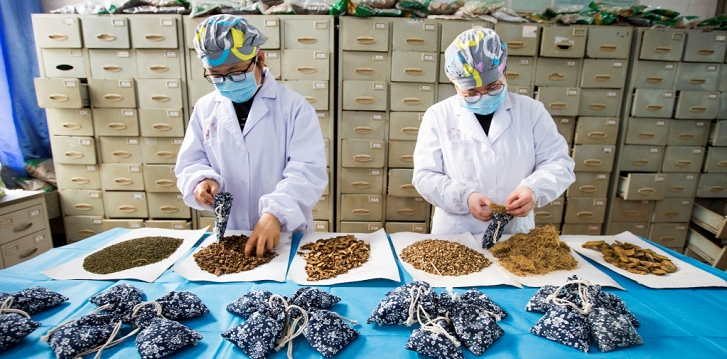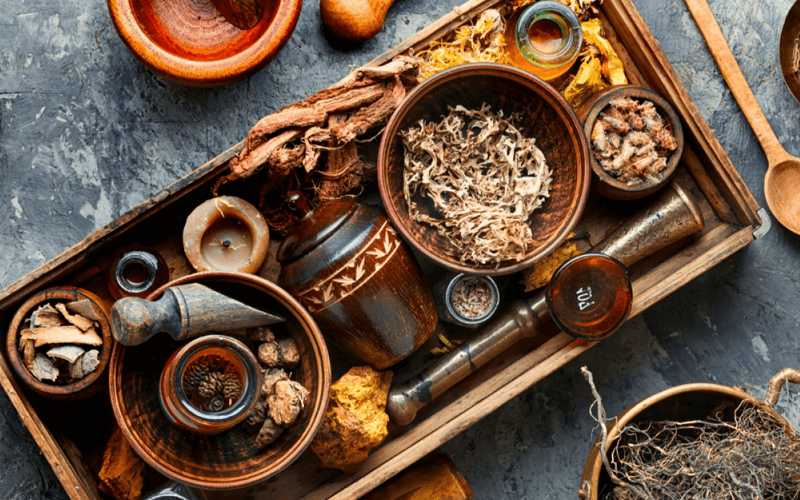Ancient Chinese strongly believed that humans are miniature versions of the greater world, and are connected to with mother nature and dependent on its properties. Balance between health and wellness and illness is a crucial principle. TCM treatment seeks to revive this balance with techniques unique to the patient.
About Traditional Chinese Medicine
Traditional Chinese medicine is an ancient system of health and wellness and has changed very little over the centuries. In the west healthcare focuses mostly on dealing with illnesses. But traditional Chinese medicine assesses your overall well-being. Its primary concept is that an essential force of life, called Qi, flows through each person’s body. An imbalance of Qi will induce illness and disease. This unevenness is most usually assumed to be triggered by an alteration in the opposing and complementary forces that form the Qi. These are referred to as yin and yang.
Western medicine has a tendency to consider the human body a lot like a vehicle. It is composed of various systems that require the correct inputs and outputs. It’s very specific and well-organized. Traditional Chinese medicine, on the other hand, does not prioritize medicine and science. Instead, TCM is based upon balance, integration, and energy. There are two core concepts behind traditional Chinese medicine:
Qi: This is also referred to as life energy or vital energy. The feeling is that Qi travels all through the body. It’s consistently acting and constantly changes. TCM treatments commonly target ways to promote and preserve the flow of Qi.
Yin and Yang: These forces are inverses of one another that summarize the qualities of Qi. Yin equates to night, black, cold, negative, and feminine, while yang represents day, light, heat, desirable, and male.
The notion is that every single thing in existence has a small amount of its opposite, and harmony is the crux. As an example, a medication from your medical doctor may heal an illness. But it’s unsafe should you take too much of it.
Based on traditional Chinese medicine, these ideas play out in a person’s body. When you level the yin and yang connected with Qi, you are healthy and balanced and well. If yin and yang are off, you feel ill. TCM aspires to produce harmony and a healthy continuance of Qi.
Face mapping is one example of a traditional Chinese medicine practice. Face mapping, which finds its foundation in ancient Chinese and Ayurvedic medical traditions, provides exclusive understanding into the condition of the skin and general wellness. This approach considers the face in its entirety, proposing that distinct regions on our visage have links to a range of internal organs.
TCM in the Modern World
You may have sometimes seen athletes or famous personalities with violet circles on their back from something called cupping. Or it could be that you know a person who speaks highly of acupuncture for their pain in the back or natural and organic brews for their colds. Increasingly, lots of people utilize techniques like these from TCM to not solely beat disease, but also prevent it.
TCM is a strategy that includes a considerable amount of ground, and the can vary. Some of the conventions never have been scrutinized in the same way as Traditional western medicine. A lot more study has been performed on herbs and acupuncture than various other remedies. Yet research studies indicate a great deal of promise:
- Cupping might help alleviate suffering resulting from shingles
- Acupuncture is commonly recognized as a treatment for a range of disorders, including injury reduction and controlling side effects coming from treating cancer
- Tai chi has been shown to strengthen balance in people that have Parkinson’s disease
- A range of herbs and plants used in traditional Chinese medicine are also used at well-respected, American doctor offices to address anything from difficulty sleeping to joint inflammation to fatigue
In the traditional system of Chinese herbal medicine, herbal formulas are frequently used to treat just about any health condition. A number of the common usages throughout China include insomnia, menopause, liver disease, sexual dysfunction in men, infertility in women, flu and colds, menstrual pain, and cancer treatment support.

What Do Traditional Western Doctors Think of Traditional Chinese Medicine?
They want to see evidence that a process is trustworthy and works effectively before they suggest you give it a try. That often can make it challenging for them to propose TCM. But on the whole, study and interest in traditional Chinese medicine is on the upswing.
You will even see a lot of leading medical centers, like the Mayo Clinic, Mount Sinai Hospital, and Rush University Medical Center offering traditional Chinese medicine procedures such as acupuncture and herb treatments.
Herbs and Roots Used in Traditional Chinese Medicine
Traditional Chinese medicine is a surprisingly complicated practice used to harmonize well being. Prioritized consuming herbs, medicinal mushrooms, and roots that help keep the body’s systems in check, traditional Chinese medicine makes use of ingredients including various herbs, roots, spices, and fruits that have been found to have at least some good health and wellness benefits. Below are just a few of the most well-known and liked of these herbs.
Ginger
This zesty root that is thought to benefit digestion, neutralize poisons in food, ventilate the lungs and warm circulation to the limbs. Presently, ginger root is typically employed in grilling and cooking, as well as in hot drinks and has been revealed to combat nausea and support digestion.
Ginseng
This gnarled root-like plant is probably one of the best recognized of the hundreds of Chinese herbs. The ginseng name actually equates to “human root” because the shape of it kind of looks like a human body. In traditional Chinese medicine it’s thought that the shape symbolizes ginseng’s potent capability to treat a person’s ills, renew Qi (life force), and warm the body. In addition to that, ginseng is considered an antioxidant, which aids in ridding the body of free radicals. There is also some indication that ginseng extract beefs up the immune system, which helps the body fight off infection and disease.
Goji Berries
Goji are also named wolfberries, this fruit have been employed as an herbal remedy for over 3,000 years, with their first acknowledged use as such showing up in the crucial book The Classic of Herbal Medicine. Goji are considered to be anti-aging since Goji are able to benefit the kidneys and nourish jing, or kidney yin and yang, which is key to all of human stamina. These beautiful and somewhat flowery berries are rich in antioxidants, vitamin A, vitamin C, and fiber and normally can be found in dried form, added to teas and numerous recipes in order to improve nutrition and vision.
Astragalus
More than 2,000 types of astragalus are used in teas, extracts, capsules and topical applications to treat health conditions from fatigue and heart disease to fibromyalgia and upper respiratory infections; the herb may also be used as an injection into the veins to stimulate the immune system and ease the adverse effects of cancer therapy. The astragalus plant is a time-honored Qi tonic, which tells you that it strengthens the whole body.
Ashwagandha
Ashwagandha root is also typically referred to as Indian ginseng, winter cherry and somnifera root. The root and leaves of the ashwagandha plant are most often used for their therapeutic characteristics. This plant is a vital natural herb in TCM because it fulfills several purposes and benefits several biological systems, including the neurological, endocrine and reproductive systems.

